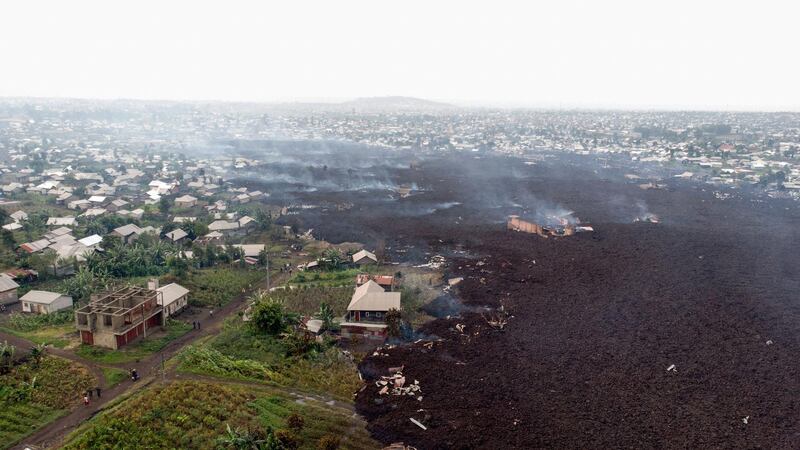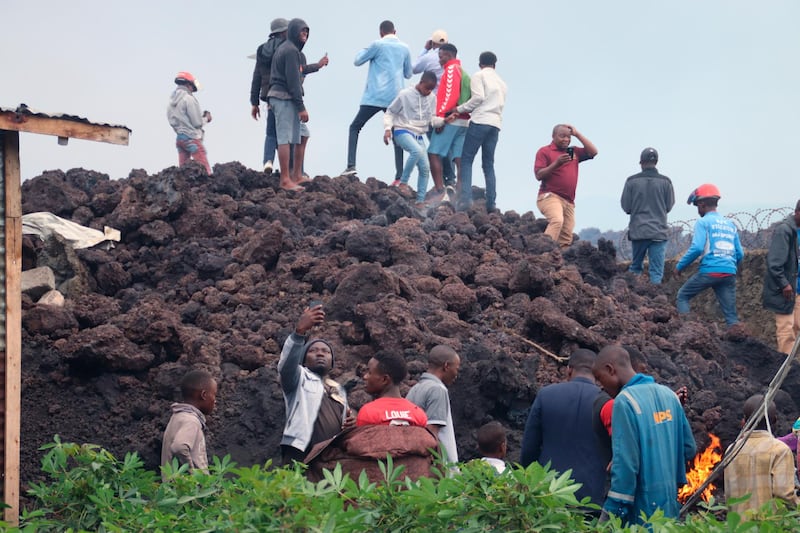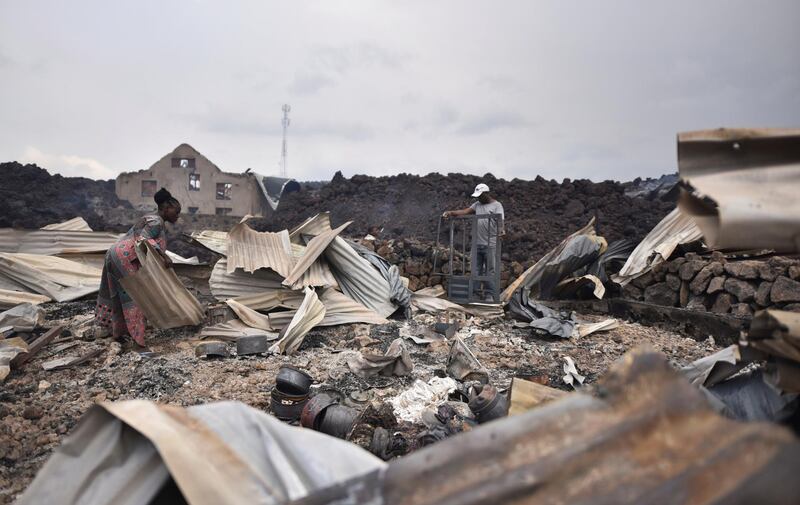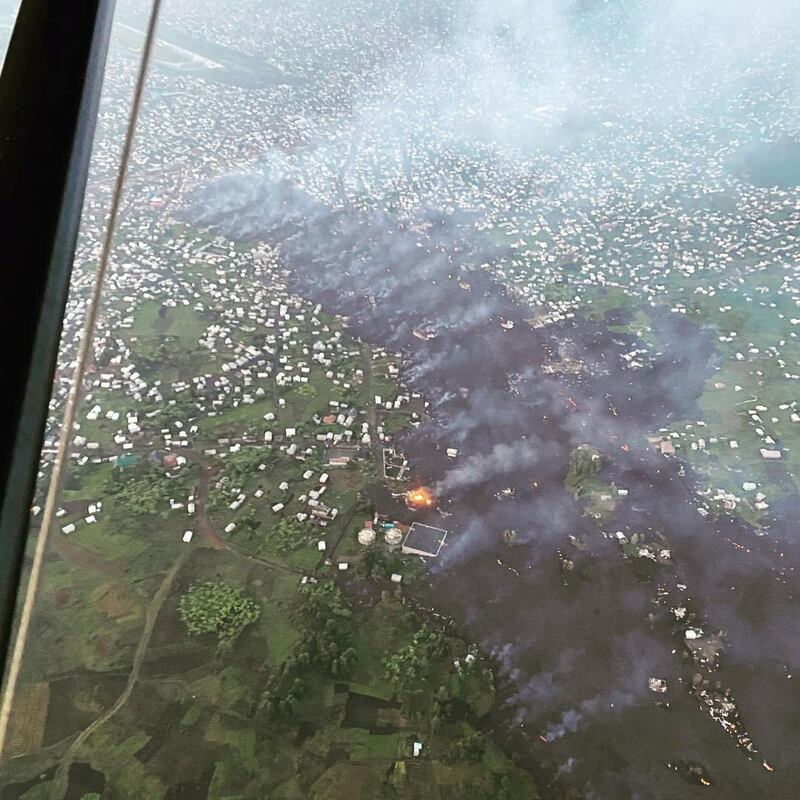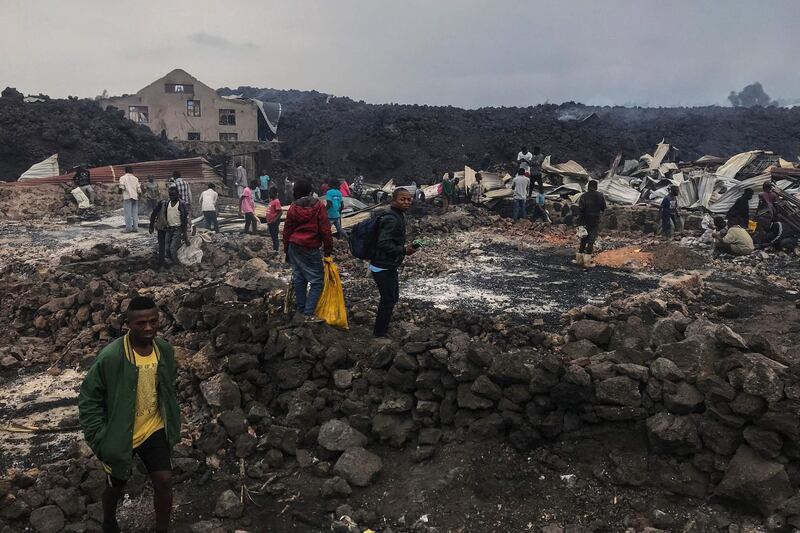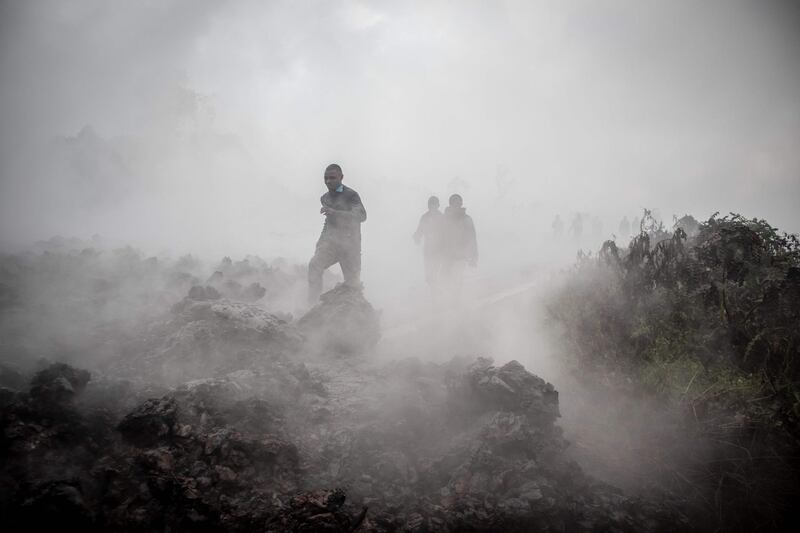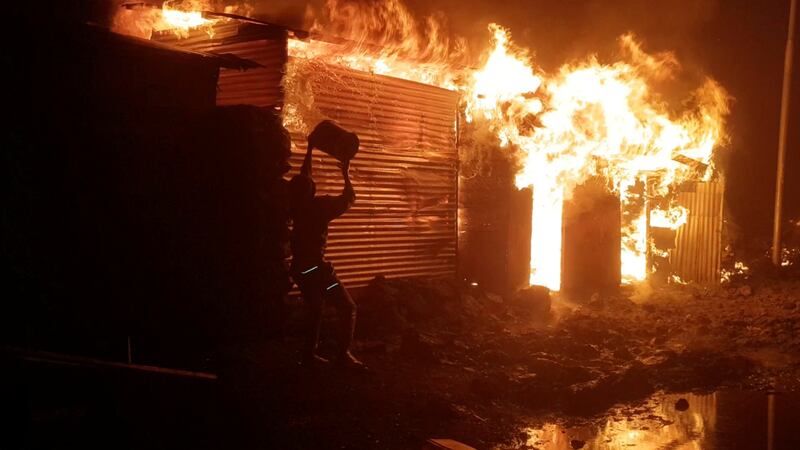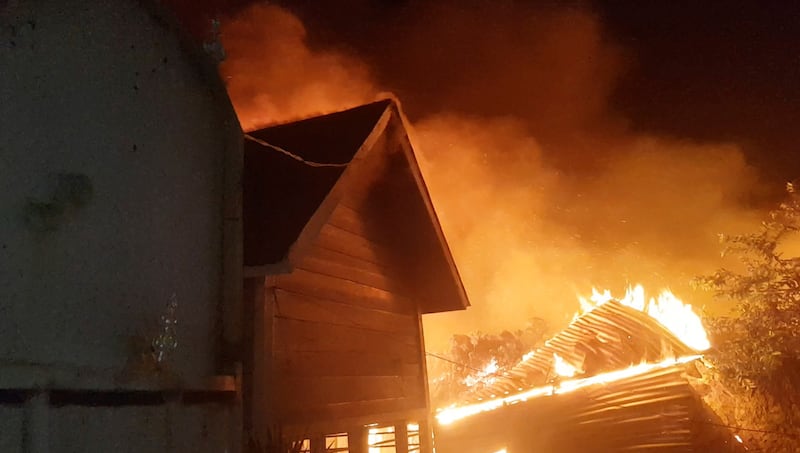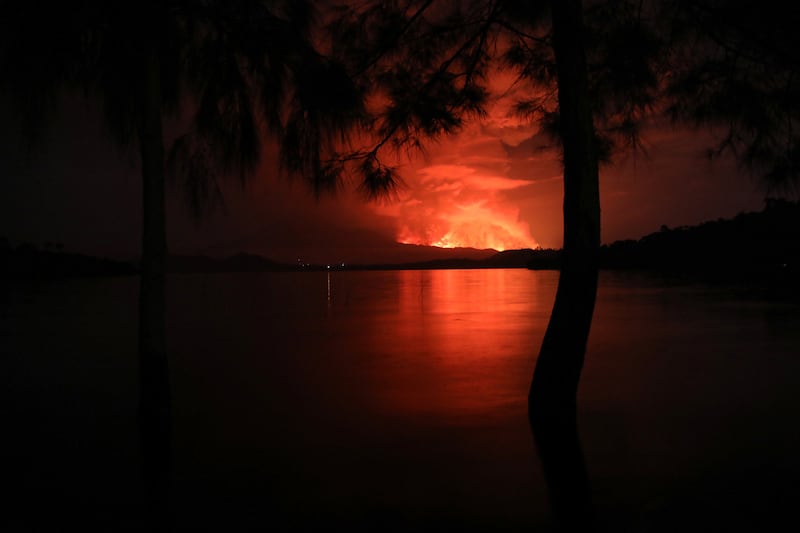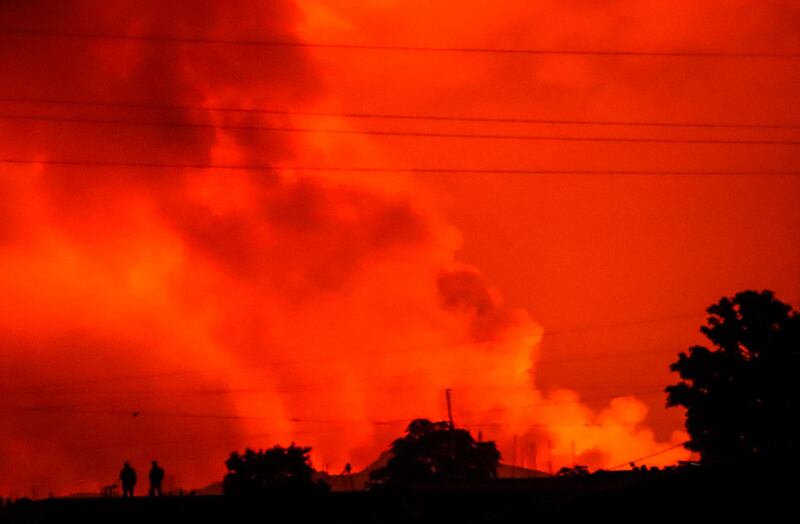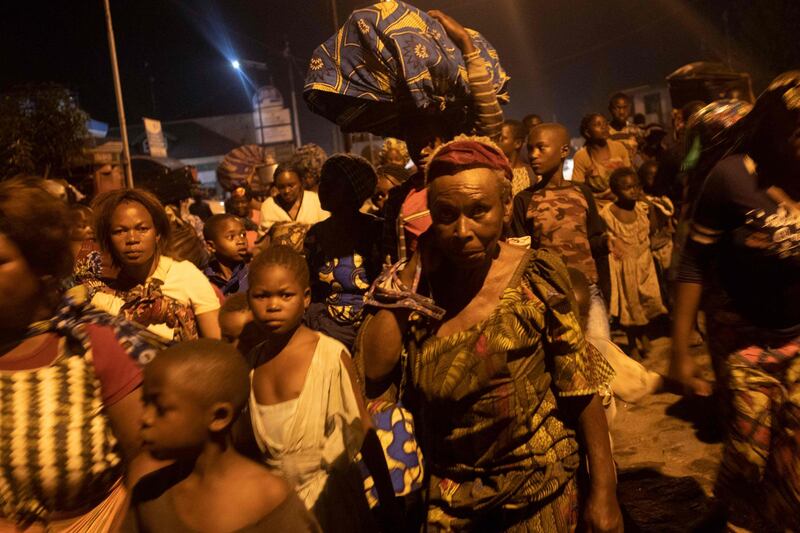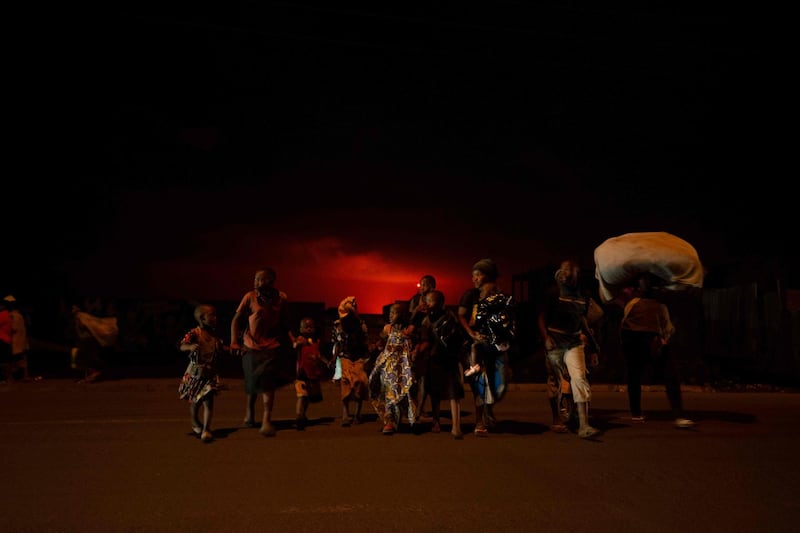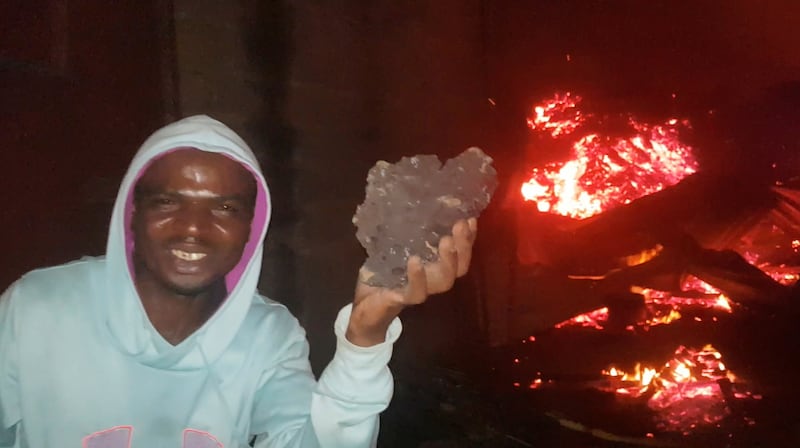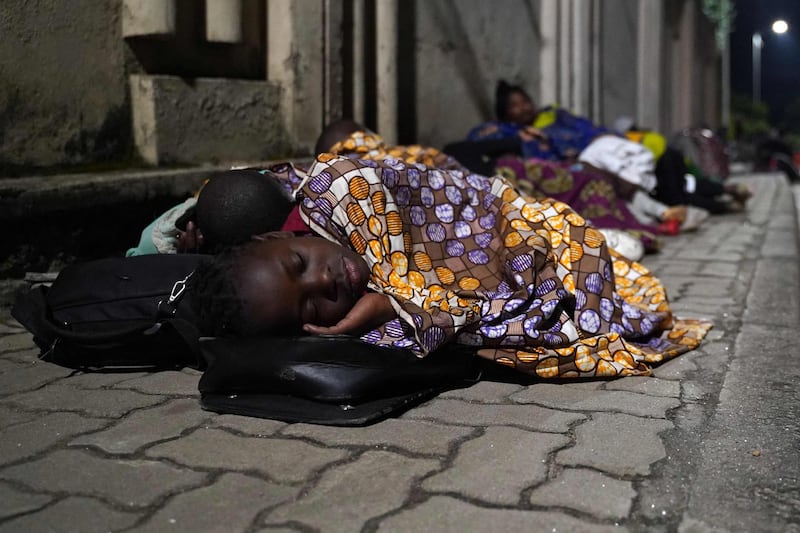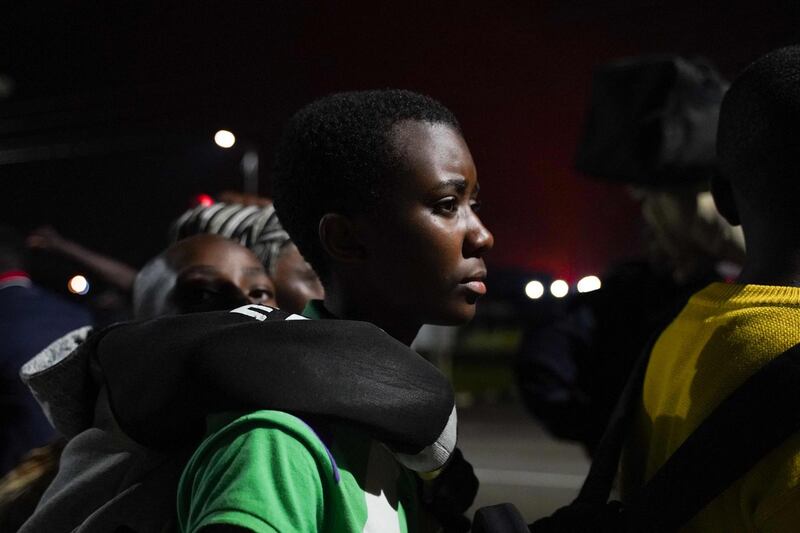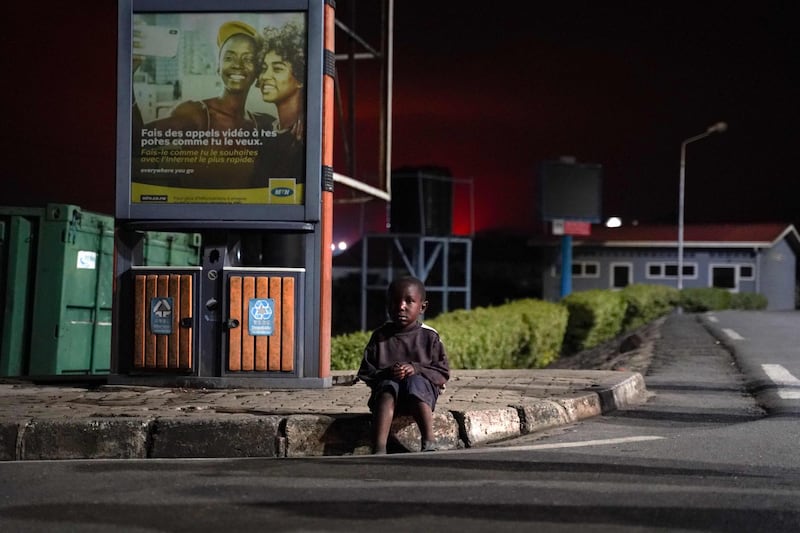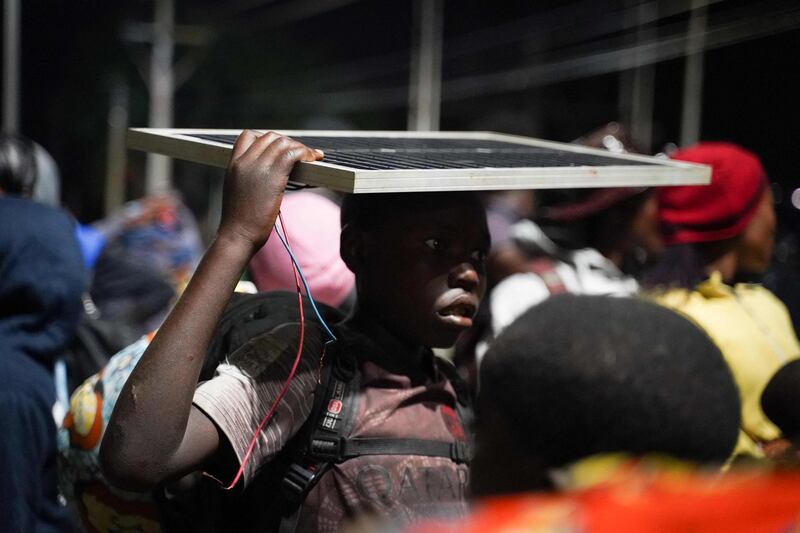Thousands of people fled after a volcano erupted on Saturday evening near the city of Goma in the Democratic Republic of the Congo.
Goma residents, recalling Mount Nyiragongo's last eruption in 2002, which killed 250 people and left 120,000 homeless, grabbed belongings and fled.
But by Sunday afternoon, it appeared lava flows were not threatening the city and some residents decided to return.
But thousands had fled the world's most active volcano by early Sunday – at least 3,000 people had crossed the border to the city of Gisenyi, according to Rwandan authorities.
The Rwanda Broadcast Agency tweeted photos of those arriving in Rubavu district, adding they would be "accommodated in schools and places of worship that have been made ready".
There were no reports of casualties.
On Sunday, Reuters news agency reported that the lava river appeared to have halted a few hundred metres from the edge of Goma, which is 10 kilometres from the volcano.
"Local authorities who have been monitoring the eruption overnight report that the lava flow has lost intensity," government spokesman Patrick Muyaya said on Twitter on Sunday.
Evacuation plans
Earlier, in the capital Kinshasa, Prime Minister Jean-Michel Sama Lukonde had convened an emergency meeting where the government activated an evacuation plan for Goma.
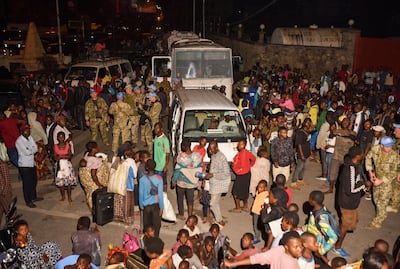
Meanwhile, DRC President Felix Tshisekedi said he would cut short his stay in Europe to return home on Sunday to supervise the co-ordination of aid.
But the first departures from Goma came even before the official confirmation that Mount Nyiragongo had erupted at around 7pm.
Fears of 2002 repeat
"The sky has turned red," one resident, Carine Mbala, told AFP.
"There is a smell of sulphur. In the distance you can see giant flames coming out of the mountain," she said.
Resident Richard Bahati said he was incredibly worried about the eruption: "I lived through this volcano problem in 2002.
"The volcano had devastated all our homes and all our possessions. That's why I'm scared again this time."
"There are a lot of people on the road, a lot of cars – it's an escape," one man with his family in his car told AFP.
"It is moving at a snail's pace, on three or four lanes," he said.
"There are children, women, old people who are on foot and the rain is coming. It's complicated."
Goma is home to a large contingent of peacekeepers and staff of Monusco, the UN mission in the country, as well as the base of many NGOs and international organisations.
Several aircraft, belonging to Monusco and private companies, took off in the evening.
Volcano watchers have been worried that the volcanic activity observed in the last five years at Nyiragongo mirrors that in the years preceding eruptions in 1977 and 2002.
Volcanologists at the Goma Volcano Observatory, which monitors Nyiragongo, have struggled to make basic checks on a regular basis since the World Bank cut funding, amid embezzlement allegations.
In a bulletin on May 10, the observatory said there had been increased seismic activity at Nyiragongo earlier in the month.
